Mowing ditches and embankments
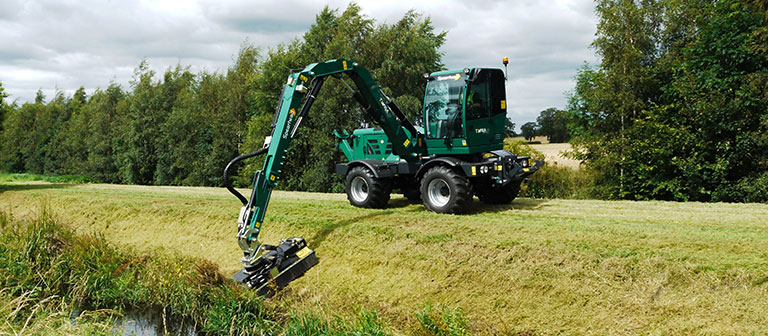
Why do internal drainage boards undertake this essential maintenance work and what are the key considerations?
At this time of year internal drainage boards are commencing their annual maintenance to mow and repair watercourses and flood embankments across England’s lowlands.
Mowing is important. Internal drainage boards mow in the water for a good flow or on the banks to ensure their stability and safety. In this way, they prevent ditches and watercourses from closing up, which hinders the supply and discharge of water. By keeping channels open and banks in good condition the ditches retain their capacity to convey water in the event of flooding due to heavy rainfall, or in the event of drought.
On embankments it is important that the turf is strong to prevent them slumping during wet weather. At the same time, ditches and embankments are a habitat for a variety of flora and fauna, and drainage boards want to promote biodiversity. That is why mowing is necessary, but with care.
Healthy grass cover

Drainage boards manage around 20,000 kilometres of lowland watercourses and flood defences across England. These primarily provide safety against flooding. To protect the banks against flowing water, a good turf is needed with a strong root system. The roots hold the soil together. Often we talk about grass, but dozens of plant species can grow on a few square meters.
Strong roots develop when the grass is healthy and well maintained. If you don’t, grass can suffocate and roots can die. Or species emerge that can take over and damage the banks, such as trees and shrubs. These can make banks more unstable, especially during a flood event. That is why drainage boards typically mow ditches and embankments once or twice a year.
Scheduling the work
Ditches and embankments are usually mown from mid-July into the autumn. The works are phased to start with:
- the most critical watercourses and embankments to manage flooding,
- those areas where less intrusive and more nature friendly maintenance techniques can be applied,
- to control and/or eradicate invasive non-native plant species.
Drainage boards mow as often as necessary to make water level management possible and to meet their standards for water supply and drainage. Drainage boards typically work with uniform maintenance packages in accordance with each drainage board’s management plans, environment policy, and biodiversity action plan etc. These packages of work are set up in such a way that there is sufficient flexibility to optimise maintenance, provide customisation and where necessary anticipate changing circumstances. Boards do deviate from their planned maintenance if the weather conditions (drought or extreme rainfall) give cause to do so.
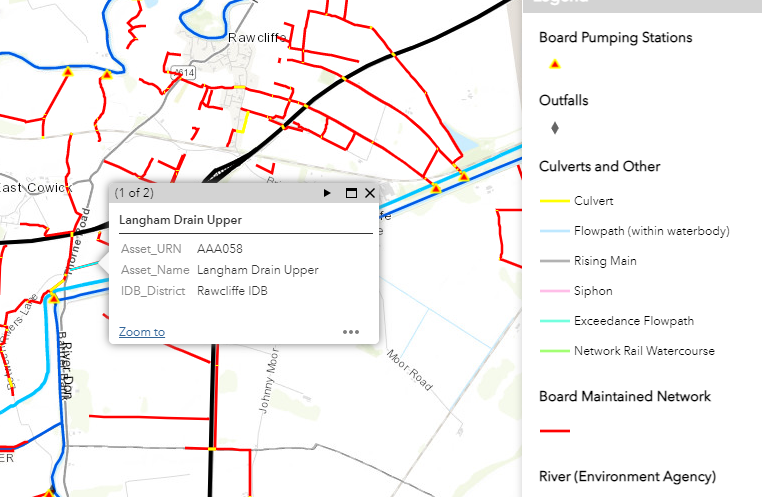
Typically, each watercourse in a drainage board’s area has a different status: e.g. A, B, C. For drainage boards this status depends on the amount of water a channel needs to handle. In this way these watercourse networks are much like our roads: with busier motorways and A roads getting priority and quieter B roads and country lanes that still require periodic upkeep.
Often the most important channels (A) are closer to the point of discharge from the district, such as a pumping station. These channels are the ones that are maintained more frequently and are usually the first to be managed each year. The other waterways are checked routinely by the drainage boards with periodic maintenance or interventions to ensure the flow is not obstructed.
Drainage boards and their contractors do have to drive over private land to maintain watercourses in their district. Landowners are notified of this work and are obliged to allow the maintenance work and receive the clippings or arisings. When performing mowing maintenance, work often has to be done from the field, which may contain crops. Of course, drainage boards try to take this into account as much as possible. But sometimes maintenance can no longer be postponed and the crops have to be driven through to perform their public function. Drainage boards often publish an outline of their maintenance maps and plans, but these naturally have to vary due to growing and weather conditions.
Considering flora and fauna
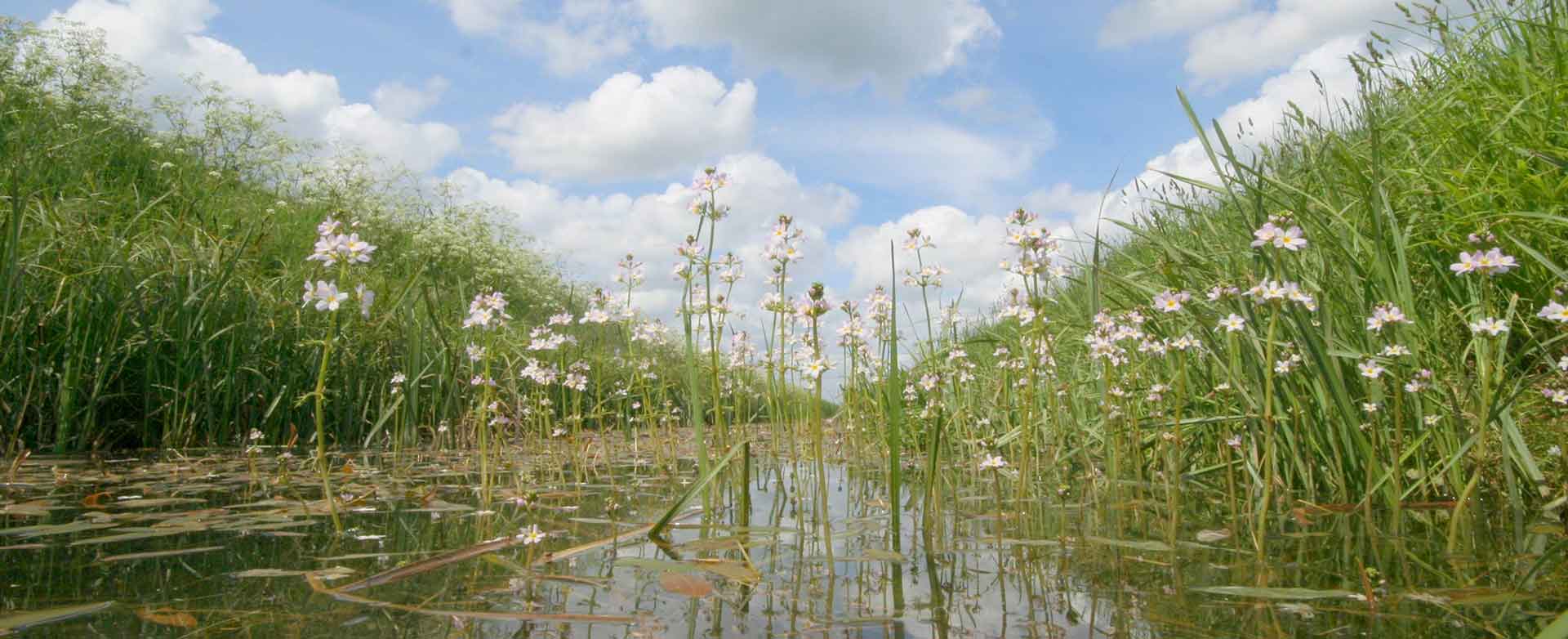 When mowing, drainage boards explicitly take the flora and fauna into account. Clippings are deposited on the watercourse bank, in such a way that water and the animals present can still return to the water. Where possible from a safety and engineering standpoint drainage boards can leave vegetation more often and mow in phases, for instance alternating banks between seasons. Operatives are trained to look out for signs of aquatic wildlife and mitigate these, and non-intrusive bird surveys are carried out to log the location of nests present when early season works, or works in more favourable habitats, occur during the breeding season.
When mowing, drainage boards explicitly take the flora and fauna into account. Clippings are deposited on the watercourse bank, in such a way that water and the animals present can still return to the water. Where possible from a safety and engineering standpoint drainage boards can leave vegetation more often and mow in phases, for instance alternating banks between seasons. Operatives are trained to look out for signs of aquatic wildlife and mitigate these, and non-intrusive bird surveys are carried out to log the location of nests present when early season works, or works in more favourable habitats, occur during the breeding season.
Furthermore, drainage boards focus on giving a boost to certain characteristic species that belong in lowland areas, such as kingfishers, otters, and barn owls through their own biodiversity action plans.
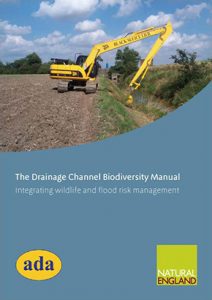
Drainage boards also manage thousands of trees alongside lowland watercourses. Every year they inspect the trees for health, safety and damage. If a tree is in need of maintenance, an inspection is first carried out. Then pruning or felling may be necessary, often followed by replanting. For instance, storm damage can lead to unsafe situations, where the drainage board may need to intervene for the flow in the water. Periodically, traditional techniques, such as pollarding and coppicing, can be used to help preserve trees along watercourses.
ADA has a long history of working with our members and conservation bodies to integrate the enhancement and conservation of wildlife with water level and flood risk management. Drainage boards utilise guidance such as the ADA/Natural England Drainage Channel Biodiversity Manual, which contains nature friendly techniques that can be incorporated into their works plans.
Habitat for insects
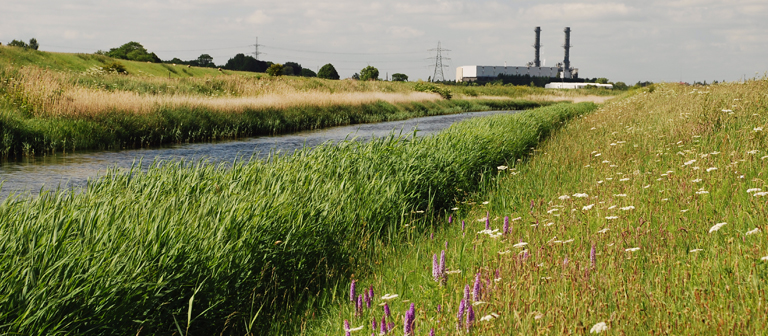 Watercourse embankments are beautiful habitats for insects. They run over long distances through the lowland landscape, forming a long ribbon of habitat. Much like hedges, they can act as a corridor for animals that are looking for a new habitat.
Watercourse embankments are beautiful habitats for insects. They run over long distances through the lowland landscape, forming a long ribbon of habitat. Much like hedges, they can act as a corridor for animals that are looking for a new habitat.
In addition, the embankments have slanting slopes with a different position in relation to the wind and the sun. A south slope gets more sun and gets warm sooner, a north slope is cooler. Several species benefit from this. There may even be some plant species on the embankments that do not grow elsewhere in the local area.
This combination of length, location, and plant species enables a number of insects to find food, to hide from predators, and to reproduce.
Improvements for nature
For a long time now, drainage boards have ensured that the turf remains strong and the ditches sufficiently hold and convey water. Increasingly drainage boards are looking at ways of ensuring that they offer a place for insects, developing more flower-rich watercourse embankments, as trialed in the Netherlands.
In the coming years, drainage boards wants to provide more variety and customisation for biodiversity. For instance, mowing the grass and disposing of the clippings in a controlled way. This can help remove a little of the soil’s nutrients from the banks. With less nutrients in the soil more special types of grasses and plants can grow. Resulting in even stronger banks and a more diverse living environment for insects. Similarly, reseeding after bank reprofiling works offers an opportunity to introduce a more diverse mix of native species to strengthen the turf.
Ian Moodie
Technical Manager, ADA
July 2022
Archive
- March 2025
- February 2025
- January 2025
- December 2024
- November 2024
- October 2024
- September 2024
- August 2024
- July 2024
- June 2024
- May 2024
- April 2024
- March 2024
- January 2024
- December 2023
- November 2023
- October 2023
- September 2023
- August 2023
- July 2023
- June 2023
- May 2023
- April 2023
- March 2023
- February 2023
- January 2023
- December 2022
- September 2022
- August 2022
- July 2022
- June 2022
- May 2022
- April 2022
- March 2022
- February 2022
- January 2022
- December 2021
- November 2021
- September 2021
- July 2021
- May 2021
- March 2021
- February 2021
- January 2021
- December 2020
- November 2020
- October 2020
- September 2020
- August 2020
- July 2020
- May 2020
- April 2020
- March 2020
- February 2020
- January 2020
- December 2019
- November 2019
- October 2019
- September 2019
- August 2019
- July 2019
- June 2019
- May 2019
- April 2019
- March 2019
- February 2019
- January 2019
- December 2018
- November 2018
- October 2018
- September 2018
- August 2018
- July 2018
- June 2018
- May 2018
- April 2018
- March 2018
- February 2018
- January 2018
- December 2017
- November 2017
- October 2017
- September 2017
- August 2017
- July 2017
- June 2017
- May 2017
- April 2017
- March 2017
- February 2017
- January 2017
- October 2016
- September 2016
- August 2016
- July 2016
- June 2016
- May 2016
- April 2016
- March 2016
- January 2016
